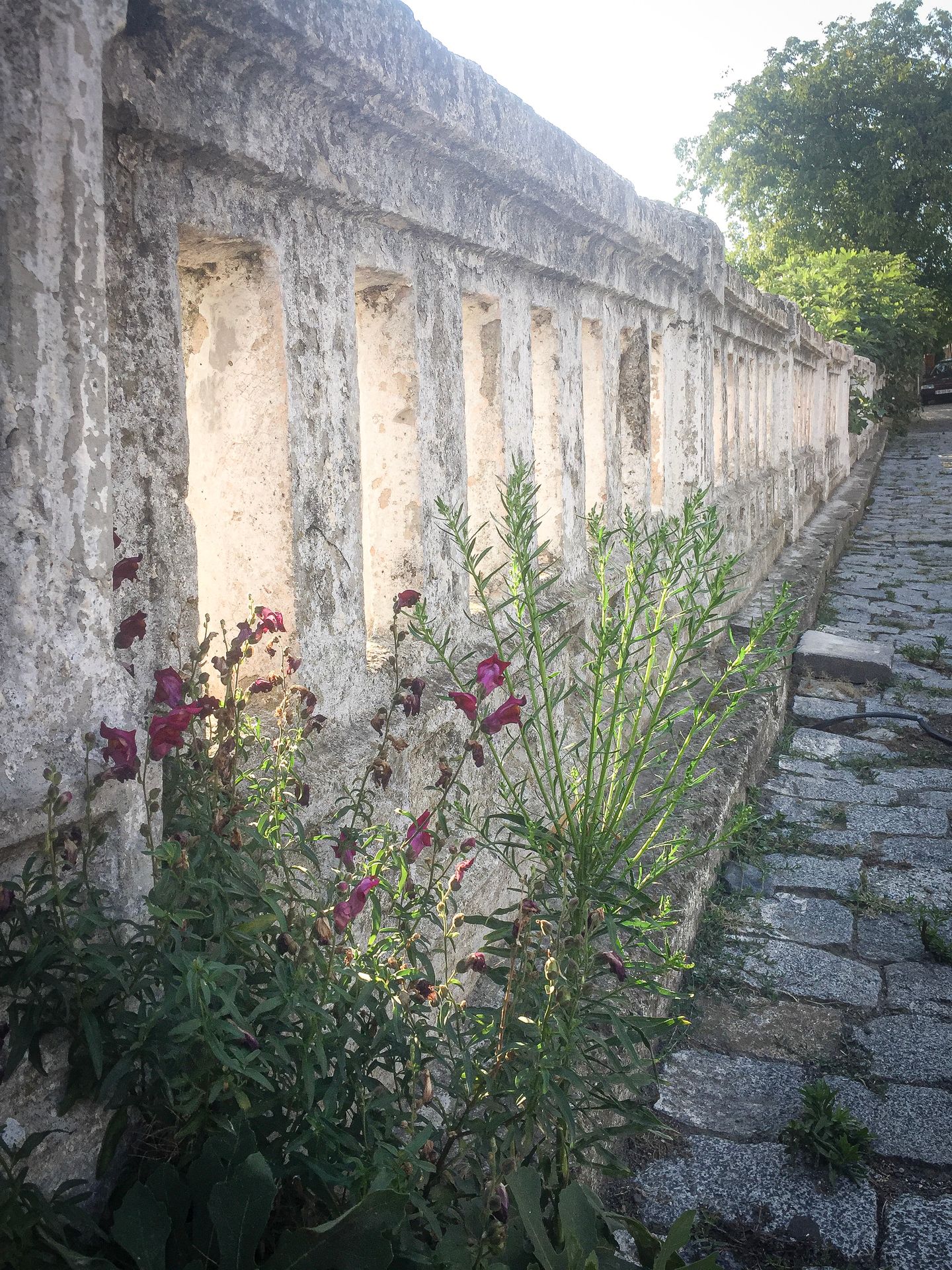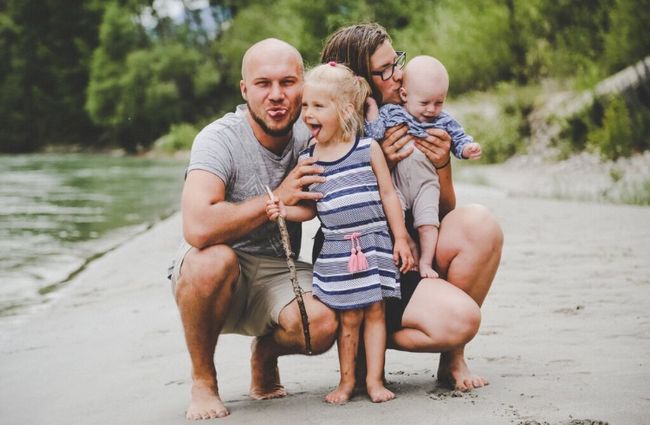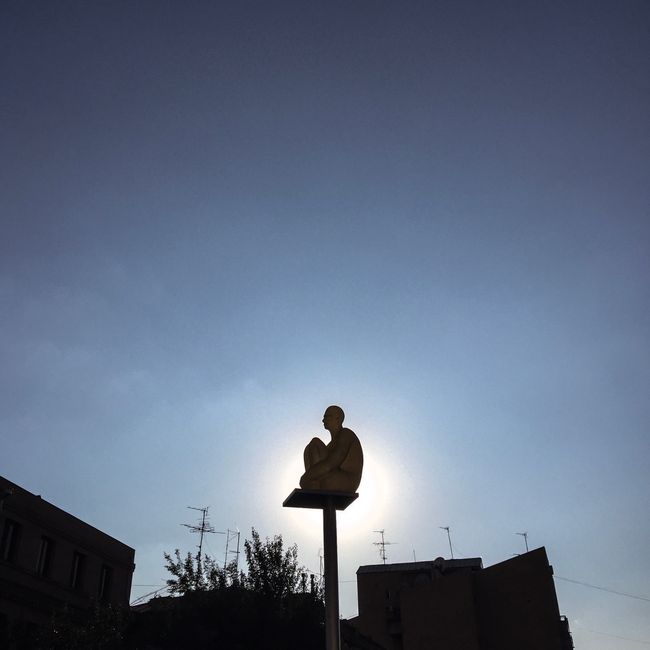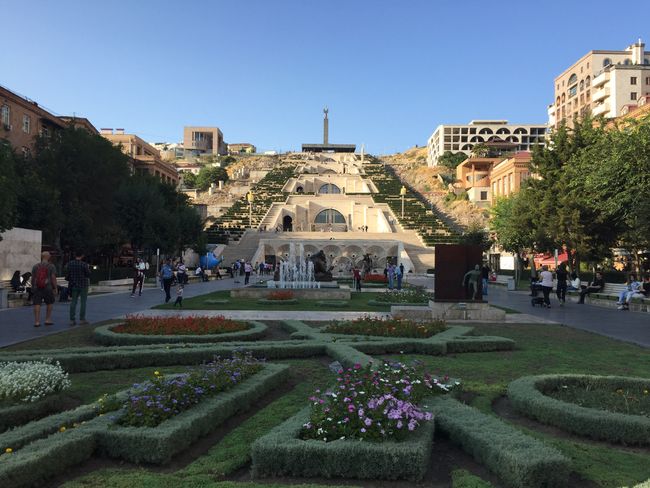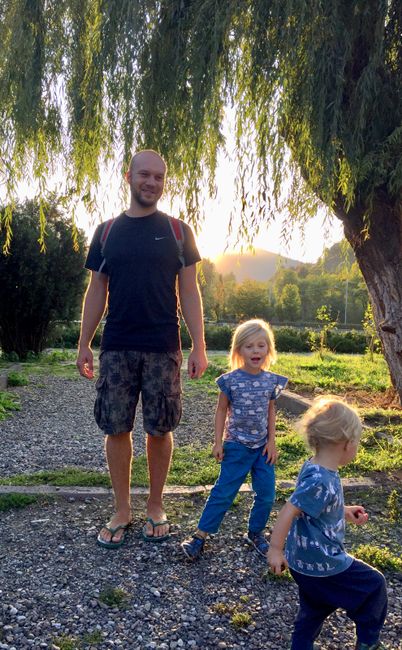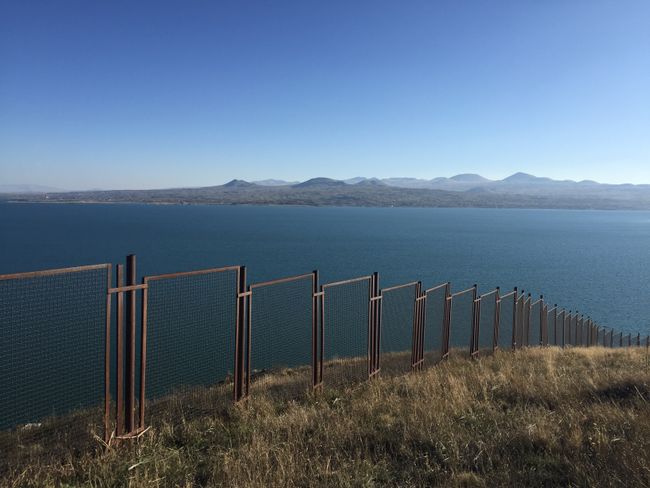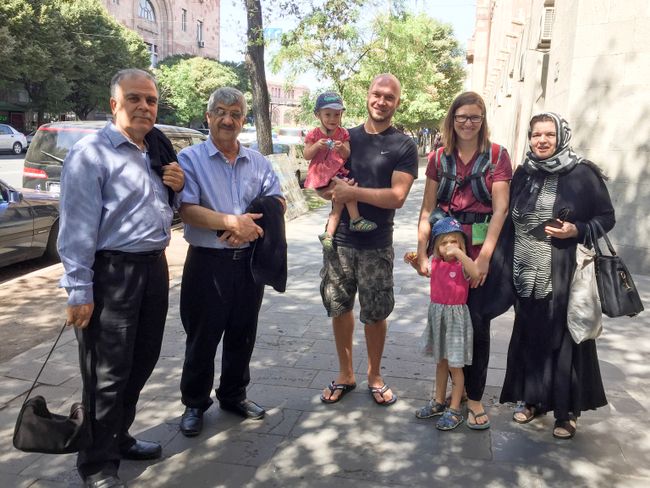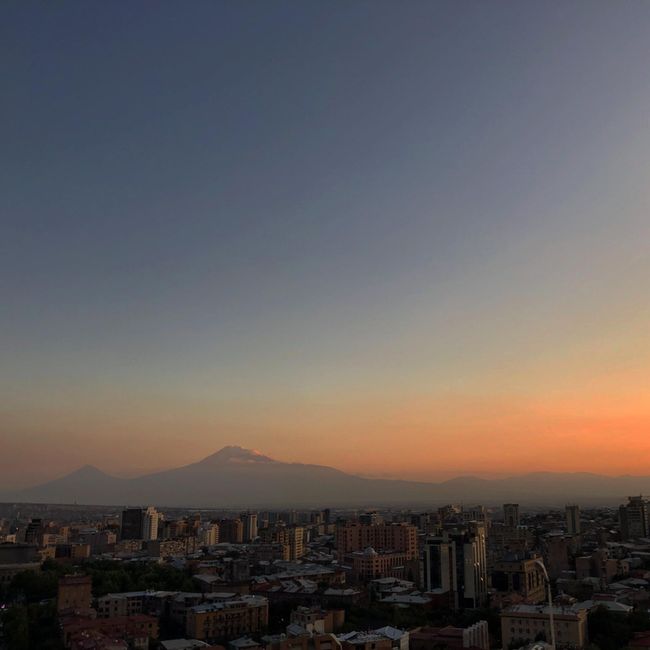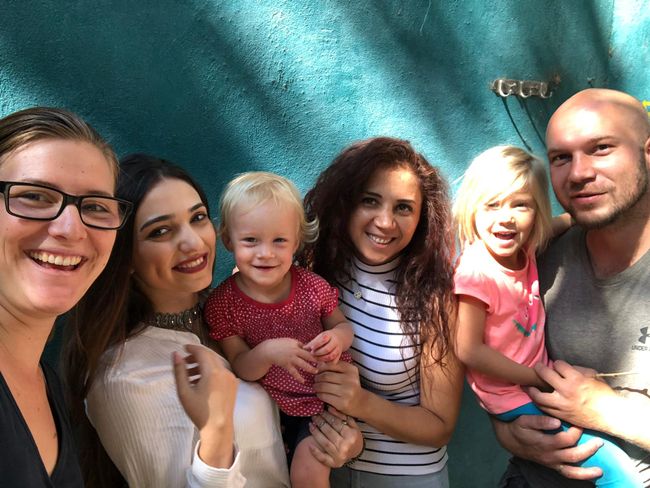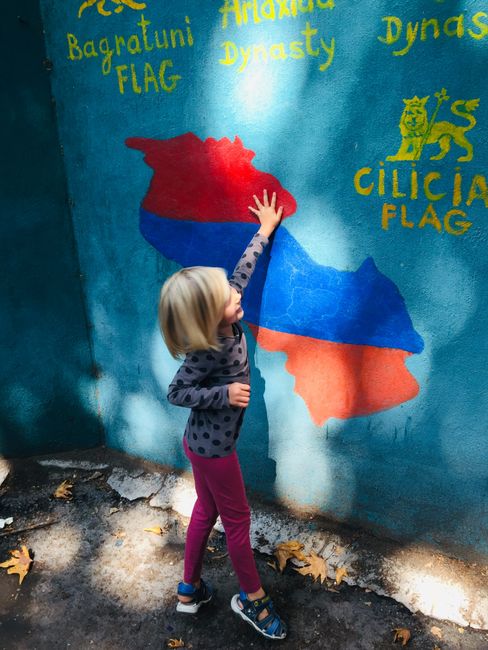Cross-border commuter
بڵاوکراوەتەوە: 19.09.2019
سەبسکرایبی هەواڵنامە بکەن
We have been in Armenia for over a week now. We have mainly been in the capital, Yerevan, which appeared to us as European and classically creative.

Meanwhile, we are moving north, where there are beautiful hiking routes and more monasteries. Many observations - how the Armenians dress, how they speak, what they do - and our previous experiences - the encounters in the small hostel where we slept, the short conversations on the street - keep raising a question: Where is the border?

Apparently, we humans tend to divide our environment into two piles and draw a line in between. There is good and bad. Beautiful and ugly. Mine and yours. Right and wrong. And indeed: normal and not normal.
When we move in our usual setting, in our culture and among the people we grew up with, we may not even notice where we draw a boundary between good and evil. We don't think about it, it happens automatically. But when we travel, it's a different story.
We are foreigners.

We have no idea about the local lines and divisions.
But we get to know them. And something can be set in motion that helps us draw these borders more consciously. Or not at all.
We are traveling with small children. That means we automatically become part of the community. The boundaries of privacy are regularly disregarded by our children when they approach other people, cut them off, or run into them, or when they scream so loudly on the bus that no one can hear the music. But it is also a sign for the people around us that they should come to us - because they want to pinch the cheeks of our kids, or they absolutely have to give us a week's supply of bread, or they just want a conversation or a photo.

Our children are regularly saved from certain death by strangers, on stairs and walls. Even when we parents are standing right there. For the people in the Caucasus, the boundaries for children are different - young children are allowed less freedom of movement outside their own four walls.
We commit another cultural boundary crossing every day with our shoes. Shoes are very important here. Since the countries we have traveled to so far are very dusty, people attach great importance to wearing spotlessly clean shoes. It makes sense. So it's obvious that we stand out with our worn-out flip-flops. We now wear our flip-flops from morning to evening. We do have sturdy shoes with us, but they are for hiking or for cold days. And since there have hardly been any cold days so far, we walk around in the dirty sandals that probably make the eyebrows of every Armenian grandma twitch from a kilometer away. Flip-flops.

We know that by doing this, we are crossing a boundary. And it gets even more dramatic: Because in these countries (mind you: dust), no one goes barefoot. Never. And nowhere. That means, outside you wear nice shoes, and inside you wear something light - oh, flip-flops. So, we are pushing the limits with our shoe inventory. Therefore, we have decided to simply wear our shoes everywhere and, if no one is watching, to be barefoot indoors. And somehow we just can't teach this rule to our children. They miss walking barefoot on grass. On every occasion, they take off their sandals and rush off. Shocking every Armenian mother. From the reactions, we can tell that we are challenging the boundaries of courtesy and the mental and physiological health of our fellow human beings - from their perspective. And this is where an interesting process begins, because we ask ourselves: What is normal? Is it unhealthy for a child to play on cold tiles in the summer? Is it healthy or appropriate to walk barefoot? Where is the boundary between "We really want to do this" and "We should probably not do this"? As a family, we start to wonder - and realize how we are influenced by our culture and background.
We encounter very, very hospitable people here in Armenia. No matter where we are, strangers on the street give us gifts, show us appreciation, and help us. For example, we were walking in a place outside of Yerevan. After a long hike, we arrived at the main road and hoped that there would still be a bus to the nearby capital. A slightly distracted-looking older man sat down next to us and explained that no bus would come anymore. But he seemed suspicious to us, even though he provided us directly with fresh walnuts. What did he want from us? Does he belong to the good people or the bad kind? Shortly after, a much more trustworthy man appeared, who invited us to his house to wait for a taxi there. We went along, as we were by then convinced that we had missed the last bus. What would probably never happen to us in Europe happened so astonishingly: As complete strangers, we were spontaneously invited, sat on a brand new sofa, were fed fresh fruit, and kindly questioned. Where everyone in Germany or Switzerland would probably have drawn a boundary (I'll help you, but only with a brief answer), this kind of hospitality seemed completely natural and appropriate here. Finally, the brother of our new friend appeared, who then drove us to the city for a small tip. We were very, very grateful for this encounter and for being able to benefit from this understanding of hospitality. We also want to learn from it.
But here in Armenia, borders are also physically palpable when we look into the distance.
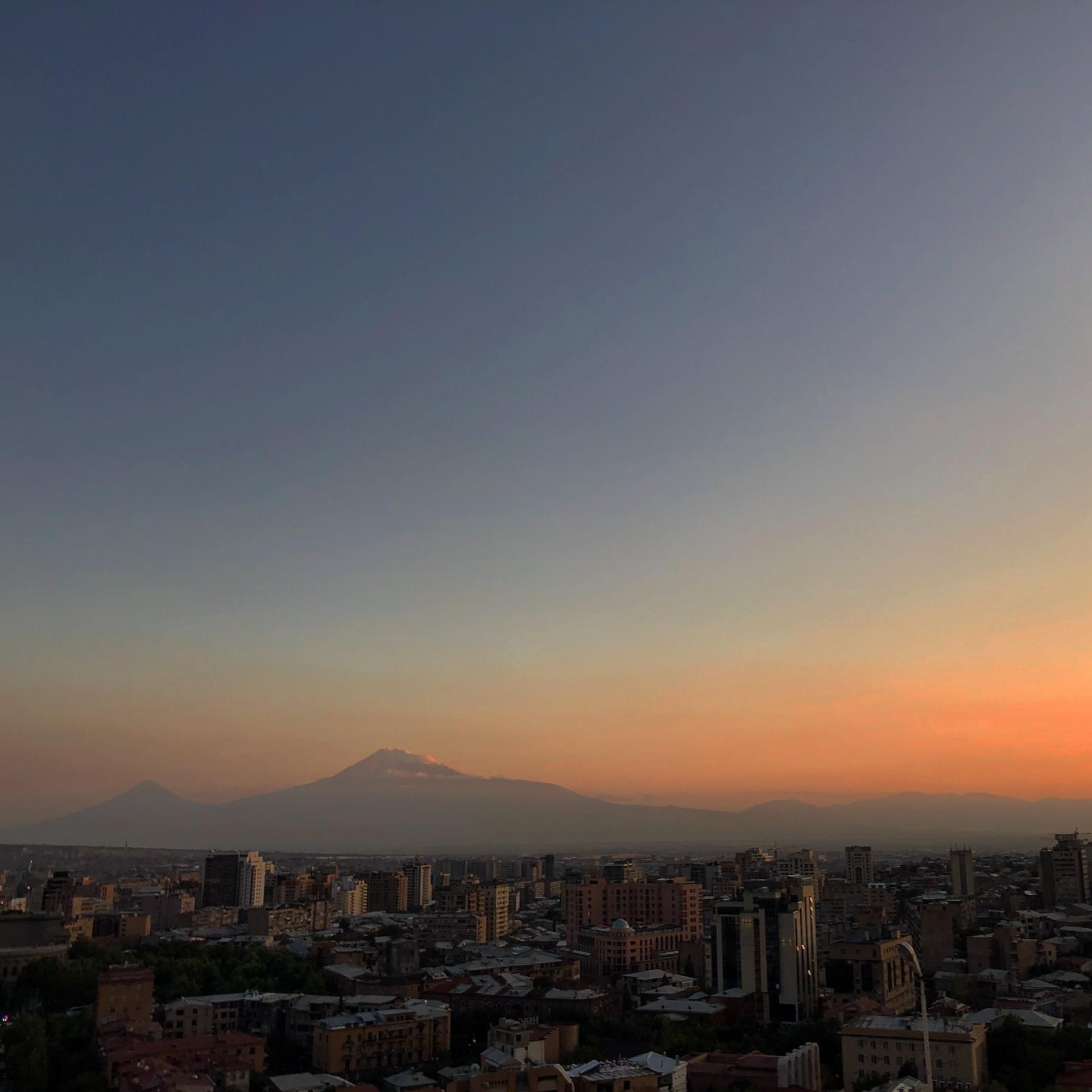
From the capital, you can see the imposing Mount Ararat. But unfortunately, it is located in Turkey. For Armenians, the borders have become narrower over history, as they used to live scattered all over Asia Minor - and saw Mount Ararat as their mountain. Armenia is a small country that now appears to be surrounded by its neighbors. Unfortunately, it is not a good neighborhood. On one side, there is Turkey, which, regrettably, did not have a good relationship with the Armenians in its history (the occasional genocide - it is worth reading about it! We can only learn from this history). On the other side, there is Azerbaijan, which has a good cultural and economic relationship with the Turks and - oh wonder - is at war with the Armenians. Why? It depends on which side you ask. It's about a territory, beautifully located in the mountains, which officially belongs to Azerbaijan, but is mostly inhabited and still inhabited by Armenians. The Armenian military has occupied this territory, and for several decades there has been a state of intermittent shooting and silence. What makes us so sad: This conflict seems almost unsolvable. It has developed because in the Caucasus, where so many groups live and have lived mixed up, borders seem out of place. And yet they were drawn: by committees and politicians somewhere in Berlin or Moscow, by colonial powers, and by rulers. They are not the people's own borders, but those of the border-determiners.

This has fatal effects on the people living there. Armenia is a poor country, among other things, because a large part of the state budget is spent on constant armament. This leaves less for roads and schools, hospitals and universities. And it has disastrous consequences for people's thinking: They must have an enemy, and the enemy is - clearly - on the other side of the border. Here in Armenia, people curse the mean Azerbaijanis, and in Azerbaijan, we could hardly talk about Armenia because we feared emotional outbursts (at the border, our passports were leafed through several times to check if we already had an Armenian stamp in them). Fences and walls do something to people - and it is not for the better.

We want to respect the borders of others. We want to ask about them and understand them.
But we also want to feel our own boundaries and allow ourselves to draw a boundary even in a foreign environment.
The important thing is actually to find out what our own boundaries are. Not those of any powers or cultures. Where do we draw the line between good and evil, between mine and yours, between normal and not normal?
And that's what we're learning right now.

سەبسکرایبی هەواڵنامە بکەن
وەڵام
